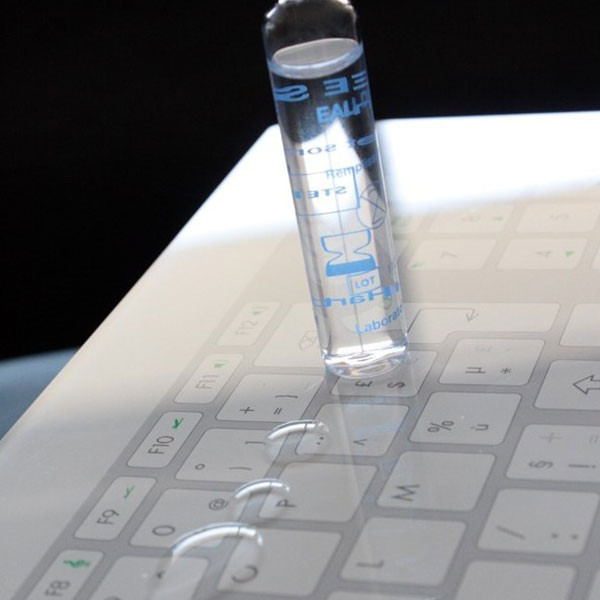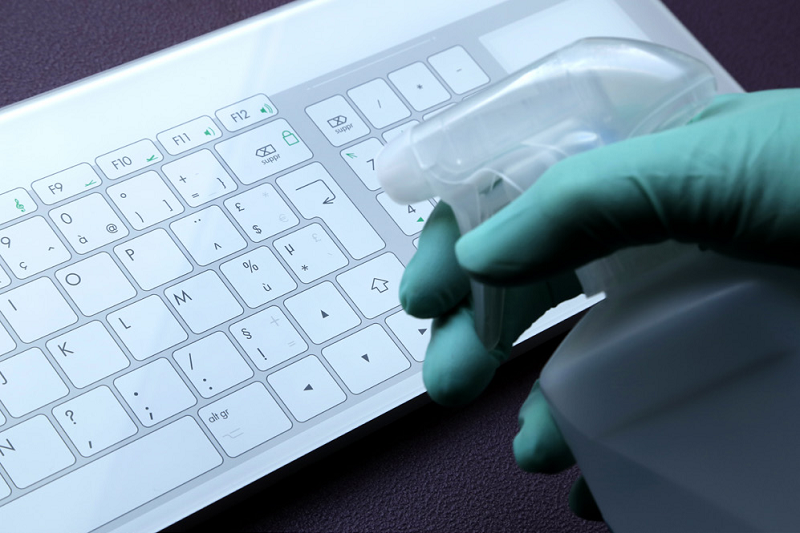Voluntary contamination
Contamination by 2 different bacterial strains (Pseudomonas aeruginosa and Staphylococcus epidermidis), known to be germ carriers, according to the methodology of EN 13697. Both types of keyboards are contaminated by the deposition and drying of approximately 106 bacteria per cm2 over their entire surface. After 30 minutes, a check of the actual contamination, by recovering the micro-organisms with a tubular triton and on a surface of 16 cm2.


Cleaning of keyboards
The keyboards are then cleaned with bactericidal disinfectant wipes (EN1040 and EN1276). The effectiveness of the cleaning is checked using a sterile sponge impregnated with 10 ml of neutralizing solution. The 10 ml of solution is recovered and analyzed. This manipulation is carried out 3 times for each bacterial strain and for the whole park. The conclusion of this study is that after contamination followed by decontamination, the average number of bacteria on a glass keyboard is reduced by 4 decimal places (10,000 times) compared to 2 decimal places (100 times) for silicone. For example, in the test with Pseudomonas aeruginosa strains, there are 3 billion (3,109) bacteria per keyboard after contamination.

After decontamination, there are still 0.17 billion on the silicone keyboard compared to only 1000 on the Tactys keyboard, either, almost total elimination of pathogens !
